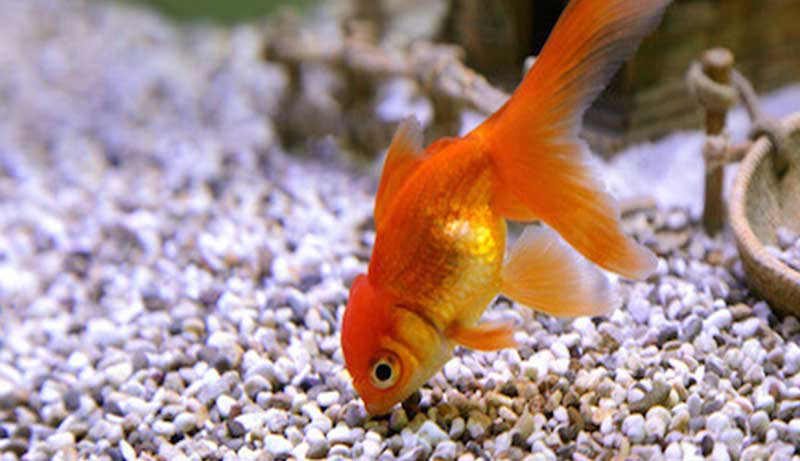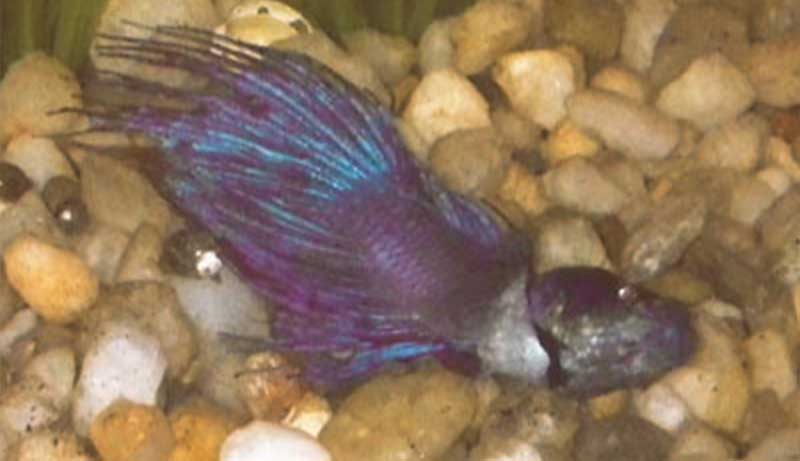When a fish dies in your tank, it can be difficult to know how to clean it properly. In this blog post, we’ll outline the steps you need to take to remove the deceased fish and clean your tank. We’ll also provide some tips for preventing future fish deaths. Let’s get started!
how to clean a tank after a fish dies?

If you’ve had a fish die in your tank, it’s important to clean the tank thoroughly afterwards. Not only will this help prevent the spread of disease, but it will also make sure that your other fish remain healthy.
Cleaning a tank after a fish death can be difficult, but it’s important to do it correctly. Follow these steps and you’ll have your tank looking good as new in no time.
- Remove the dead fish from the tank. This is the first and most important step. Use a net to remove the fish from the water and place it in a plastic bag. If you have more than one fish that has died, repeat this step for each one.
- Clean all of the surfaces in the tank. This includes the glass, gravel, and any decorations. Use a aquarium-safe cleaner and scrub all surfaces thoroughly.
- Vacuum the gravel. This will help remove any debris that has collected on the bottom of the tank.
- Remove and replace 25% of the water. This will help to remove any toxins that may have been released when the fish died.
- Perform a water test. This will ensure that the water is safe for your fish and that all of the levels are where they should be.
- Add fresh plants or decorations. This will help to make your tank look new again and give your fish a fresh start.
Following these steps will help to ensure that your tank is clean and safe for your fish. It’s important to remember that cleaning a tank after a fish death is not something that should be taken lightly. Taking the time to do it correctly will help prevent future problems and keep your fish healthy. Besides, you can choose some Silk Flower Cleaner.
How to Disinfect Your Aquarium

In short, is the process of killing or removing harmful bacteria from your fish tank. This can be done through a variety of methods, including chemicals, ultraviolet light, and heat.
There are a few different reasons why you might need to disinfect your aquarium. If you’ve just set up your tank, it’s important to disinfect the water and all of the equipment that will go into it. This will help prevent the spread of disease to your fish. If you’re adding new fish to your tank, it’s also a good idea to disinfect their tanks before they join the others. And if you think your fish tank has been contaminated with a disease, you’ll need to disinfect it to protect your fish.
The most important thing to remember when disinfecting your aquarium is to remove all of the fish and other animals first. This includes invertebrates like snails and crabs. You should also remove any plants or decorations. Once everything is out of the tank, you can start the process of disinfecting it.
There are a few different ways to disinfect your aquarium. One popular method is to use bleach. Bleach is effective at killing bacteria and other harmful organisms. However, it’s also very toxic to fish and other aquatic creatures. If you use bleach, be sure to diluted it properly and follow the manufacturer’s instructions carefully.
Another popular method for disinfecting an aquarium is to use ultraviolet light. This type of light is effective at killing bacteria, but it can also be harmful to fish and other aquatic creatures. If you use ultraviolet light, be sure to follow the manufacturer’s instructions carefully.
The last method we’ll discuss is heat. Heat is effective at killing bacteria, but it can also damage plants and decorations. If you’re going to use heat to disinfect your aquarium, be sure to monitor the temperature closely and remove any fish or other animals before the water gets too hot.
No matter which method you choose to disinfect your aquarium, be sure to take your time and do it properly. A poorly disinfected tank can lead to serious problems for your fish and other aquatic creatures. If you have any questions, be sure to ask a professional before you get started. Additionally, you can check our review on Cleaner for LVP Floors.
What to Do When There’s a Dead Fish in Your Tank

If you have a dead fish in your tank, there are a few things you need to do.
First, you’ll want to remove the fish from the tank and discard it properly. Then, you’ll need to clean the tank thoroughly to remove any bacteria or parasites that may have been present on the fish.
Finally, you’ll need to monitor your other fish closely for any signs of illness. By following these steps, you can help keep your tank healthy and safe for all of your fish.
cleaning tank after betta fish died

It’s never easy to lose a pet, and the grieving process can be made even harder when you have to clean out their tank. If your betta fish has passed away, here is a guide on how to clean their tank properly so that you can move on from this difficult time.
The first thing you need to do is remove the betta fish from the tank. You can do this by using a net or simply scooping them out with your hands. Once they are out of the tank, it’s time to start cleaning.
Start by draining all of the water from the tank. You can do this by removing the plug at the bottom of the tank or by siphoning out the water with a hose. Once the water is gone, you can start cleaning the inside of the tank.
Use a soft cloth or sponge to wipe down the inside of the tank, being careful not to scrub too hard and damage the glass. You can also use an aquarium-safe cleaner to help remove any stubborn grime. Once the inside of the tank is clean, you can replace the water.
Fill the tank up with fresh water and add in any new plants or decorations that you want. It’s important to give yourself time to grieve after your betta fish dies, but eventually you’ll be able to move on and create a new home for your fish friends.
if a fish dies should i change the water

If your fish has died, you’ll need to remove it from the tank as soon as possible. Depending on the size of your tank, you may also need to change the water. Here’s what you need to know about changing the water after a fish has died.
Removing the fish is the first priority. Use a net to remove the fish from the water and place it in a trash bag. If the fish is too large to fit in a bag, you can wrap it in newspaper or a towel and dispose of it in the trash.
Once the fish is removed, you’ll need to decide whether or not to change the water. If your tank is small (less than 5 gallons), it’s generally best to do a partial water change. Remove 20-25% of the water and replace it with fresh, treated water.
If your tank is larger, you may be able to get away with not changing the water. The bacteria in a larger tank are more efficient at breaking down fish waste, so the water won’t become as polluted as quickly. However, if you have multiple fish or the fish was particularly large, you may still need to do a partial water change.
In either case, it’s important to monitor the water quality closely after a fish has died. Test the ammonia, nitrite, and nitrate levels every day and do a partial water change if they start to rise.
Changing the water after a fish dies is a important part of keeping your tank clean and your fish healthy. By following these steps, you can be sure that your fish will have a safe and comfortable home.
Frequently Asked Questions & Answers
1. How often should I clean my tank after a fish dies?
Ideally, you should clean your tank as soon as possible after a fish dies. If you wait too long, the water can become polluted and dangerous for other fish.
2. What should I do with the body of the fish?
The best thing to do is to remove the body from the tank as soon as possible. You can either bury it in your garden or dispose of it in the bin.
3. Should I change the water in my tank after a fish dies?
Yes, you should always change the water in your tank after a fish dies. This will help to prevent the spread of disease and keep the water clean for other fish.
4. How much water should I change?
You should change at least 50% of the water in your tank after a fish dies. This will help to dilute any toxins that may be present in the water.
5. Should I add anything to the water when I change it?
Yes, you should always add a dechlorinator to the water when you change it. This will remove any harmful chemicals from the water and make it safe for fish.
6. How often should I change the filter?
You should change the filter in your tank at least once a week. This will help to keep the water clean and prevent the build-up of toxins.
7. What should I do if my fish dies of disease?
If your fish dies of disease, you should remove the body from the tank immediately and disinfect all of the tanks surfaces. You should then change at least 50% of the water in the tank.
8. Should I add anything to the water if my fish dies of disease?
Yes, you should always add a dechlorinator and an anti-bacterial solution to the water when you change it. This will help to prevent the spread of disease and keep the water clean for other fish.
9. What should I do if my fish dies of old age?
If your fish dies of old age, you can simply remove the body from the tank and bury it in your garden. There is no need to change the water or disinfect the tank.
10. Can I add a new fish to my tank after one dies?
Yes, you can add a new fish to your tank after one dies. However, you should always wait at least 24 hours before adding the new fish. This will give the tank time to adjust to the new water conditions.
Conclusion
The process of cleaning a tank after a fish dies can be daunting, but it doesn’t have to be. By following these simple steps and being mindful of the products you use, you can clean your tank and get it ready for another fish in no time at all. If you have any questions about the process or need help getting started, our team is here to assist you.
